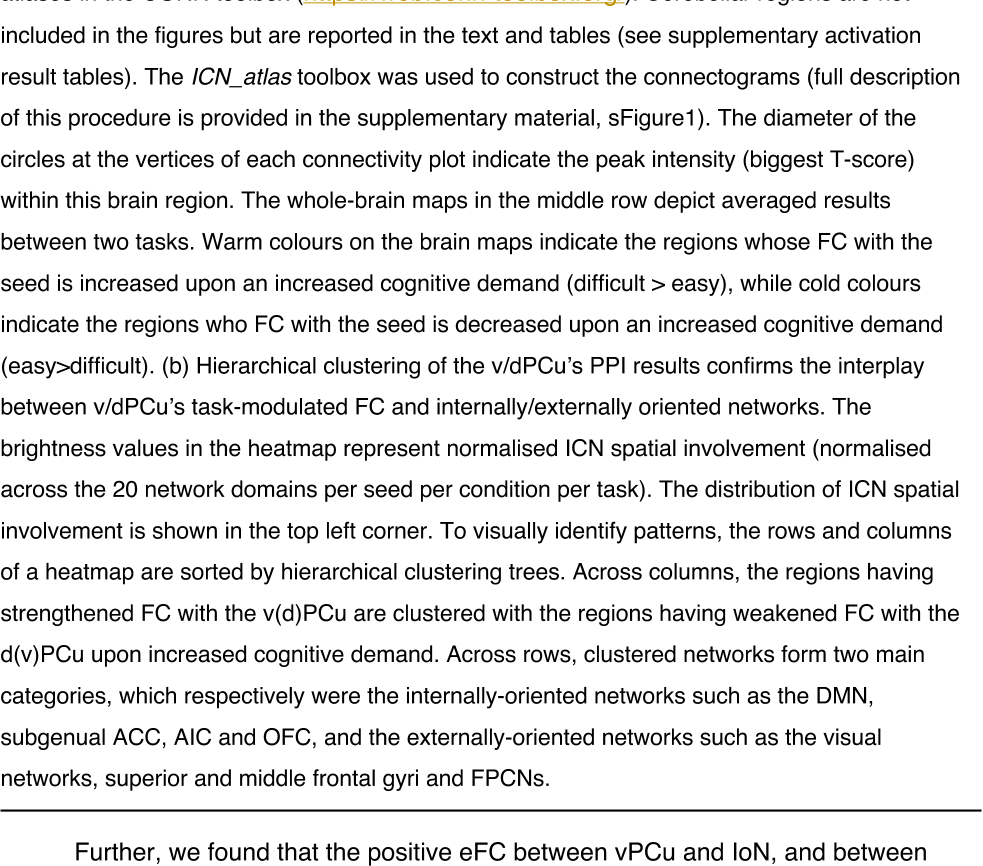




Did you find this useful? Give us your feedback














4 citations
1 citations
524 citations
...…all sources converges, endowing a narrative construction of reality: It have also been shown that during movie watching the temporal pattern of the PCu’s activity, compared to other brain regions, can track event boundaries of changing scenes in the most abstract level (Baldassano et al., 2017)....
[...]
...At this brain connectivity hub, information from all sources converges, endowing a narrative construction of reality: It have also been shown that during movie watching the temporal pattern of the PCu’s activity, compared to other brain regions, can track event boundaries of changing scenes in the most abstract level (Baldassano et al., 2017)....
[...]
520 citations
...However, the PCu’s function seems to have an all-encompassing nature since it is activated under all kinds of cognitive demand where other parts of DMN are employed (Laird et al., 2009)....
[...]
508 citations
502 citations
...…hippocampus, which are often implicated in value encoding, emotion, interoception and episodic memory (Chudasama et al., 2013; Euston et al., 2012; Gu et al., 2013; Pessoa, 2008), while the dPCu is more connected with regions in cognitive control networks that are associated with executive,…...
[...]
...10 vPCu is more connected with the vmPFC, ACC and hippocampus, which are often implicated in value encoding, emotion, interoception and episodic memory (Chudasama et al., 2013; Euston et al., 2012; Gu et al., 2013; Pessoa, 2008), while the dPCu is more connected with regions in cognitive control networks that are associated with executive, attentional control and goal-directed behaviour (Figure 3a, 3b)....
[...]
473 citations
...A previous resting-state FC study showed that the vPCu is functionally closer to the DMN, while the dPCu is more coupled with the superior occipital lobe and cognitive control regions such as the SPL (Zhang & Li, 2012)....
[...]
...A structural connectivity study also showed that from dorsal to ventral parts of the PCu, there is a spectrum of increasing connectivity with DMN regions (such as hippocampus and mPFC) and decreasing connectivity with sensorimotor, visual networks, thalamus and executive regions (such as SPL, prefrontal and premotor areas) (Cunningham et al., 2017)....
[...]